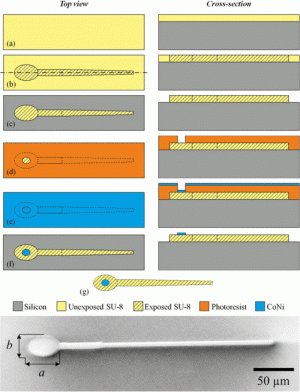MagnetoSperm: A tiny swimming robot inspired by human sperm

Meet MagnetoSperm! No, it's not a precursor to a movie called 'X-Men: The Next Generation' it's a tiny, swimming robot inspired by sperm cells.
Described in the journal Applied Physics Letters, such microrobots if further scaled down could become valuable tools for in vitro fertilization, delivering targeted drugs into the body or even performing minimally invasive surgical procedures.
Ick factor vies with cool factor in this bioinspired bot's story.
"Sperm was chosen because of its streamlined shape," lead researcher Sarthak Misra, a roboticist at the University of Twente in the Netherlands, said of the team's inspiration. "And we found it is also quite efficient in terms of traveling distances in environments that (have) varying fluid flow.... Sperm cells are adept to that and can move really well."
The microrobots measure just 322 micrometers long, 5.2 micrometers wide and 42 micrometers thick, and their heads are coated with a 200-nanometer nickel-cobalt layer that allows them to respond to a magnetic field.
Microrobots are often limited to larger-than-ideal sizes because they need to have their power and navigation systems attached, which can get bulky, said Misra, who spoke from Hong Kong while attending the International Conference on Robotics and Automation. Misra's team solved this by using four electromagnetic coils to generate an oscillating field that was as weak as a refrigerator magnet but strong enough to get the tailed robots to waggle and swim.
Size, of course, matters: At 322 micrometers long, these spermbots are still roughly six times the size of their biological peers (in humans, anyway). Further miniaturizing these mechanical swimmers which the researchers hope to do by developing magnetic nanofibers to replace the spermbot's current tail could potentially make such microbots useful for a variety of applications in the body, including cleaning out clogged arteries and helping conventionally invasive surgeries become scar- and trauma- free.
More information: MagnetoSperm: A microrobot that navigates using weak magnetic fields, Appl. Phys. Lett. 104, 223701 (2014); dx.doi.org/10.1063/1.4880035
Journal information: Applied Physics Letters
©2014 Los Angeles Times
Distributed by MCT Information Services





















